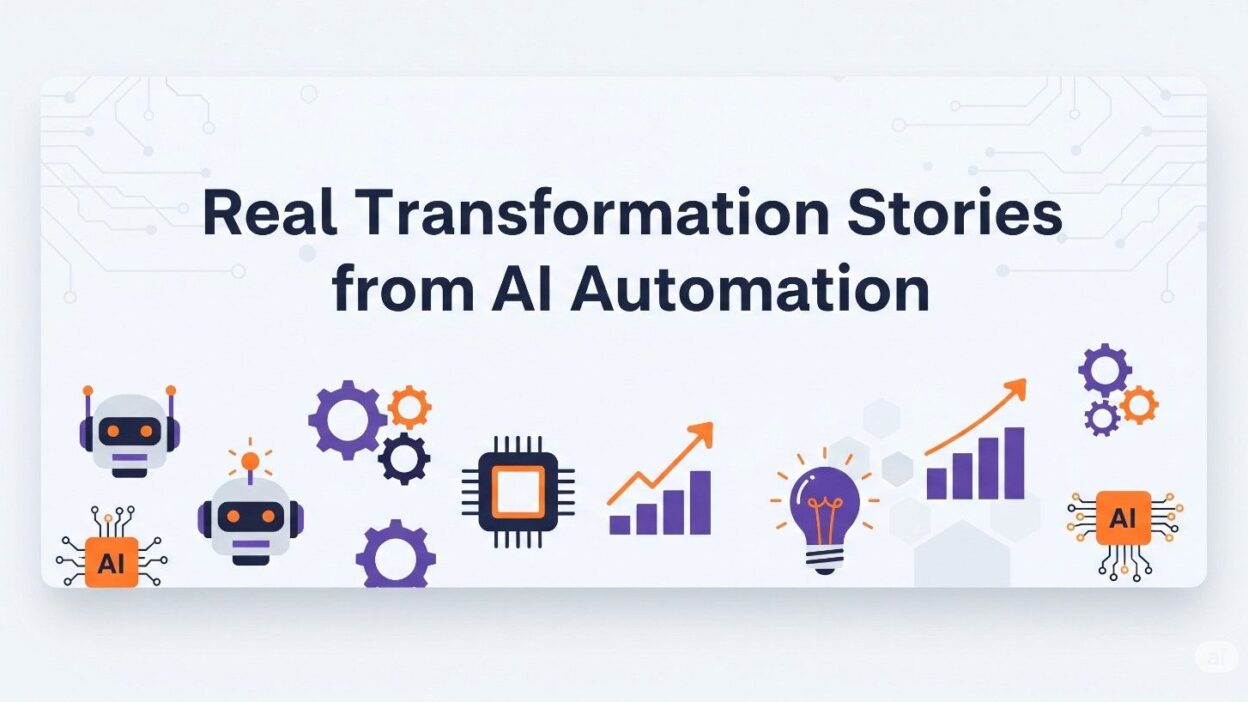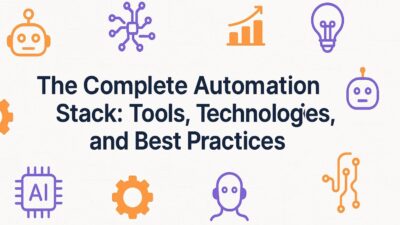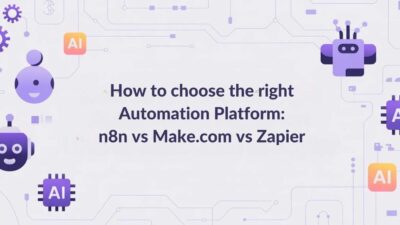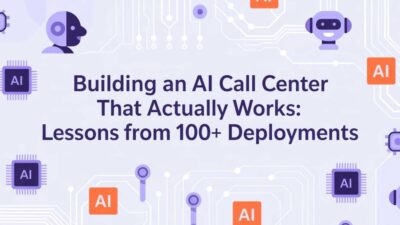Every business leader has witnessed that moment when a competitor suddenly accelerates past them, seemingly overnight. The secret isn’t magic—it’s AI automation transformation. These real-world stories reveal how ordinary businesses achieved extraordinary results by embracing intelligent automation.
Table of Contents
The Universal Pain Points: Life Before AI Automation
Before we explore transformation success stories, let’s acknowledge the common struggles that plague businesses stuck in manual processes:
- Resource drain: Teams spending 60-80% of their time on repetitive tasks
- Error cascade: Manual processes creating 3-5% error rates that compound across operations
- Growth ceiling: Every expansion requiring proportional staff increases
- Customer frustration: Response times measured in days, not hours
- Competitive disadvantage: Watching agile competitors capture market share
Manufacturing Marvel: Siemens’ Production Line Revolution
Before: Siemens’ manufacturing facilities relied on manual quality control inspections, requiring skilled technicians to examine thousands of components daily. This process was slow, subjective, and couldn’t keep pace with production demands.
After: Computer vision AI systems now perform real-time quality inspections at superhuman speed and accuracy.
Transformation Impact:
- 99.7% defect detection accuracy compared to 85% human accuracy
- 300% faster inspection speed enabling higher production throughput
- $2.3 million annual savings from reduced waste and rework
- Zero customer complaints related to quality issues in automated lines
The ripple effect transformed their entire operation—production managers now focus on optimization rather than damage control, and customer satisfaction soared due to consistent product quality.
E-commerce Evolution: Shopify’s Customer Service Transformation
Before: Shopify’s merchant support team handled thousands of repetitive inquiries daily—password resets, billing questions, and basic troubleshooting—creating long wait times and agent burnout.
After: AI-powered chatbots and automated resolution systems handle routine inquiries while routing complex issues to human specialists.
Measurable Results:
- 85% of basic inquiries resolved instantly without human intervention
- Average response time reduced from 6 hours to 30 seconds
- Customer satisfaction scores increased by 40%
- Support team productivity improved by 250% as agents focus on high-value problem-solving
The transformation didn’t eliminate jobs—it elevated them. Support agents became customer success specialists, driving merchant growth rather than simply answering questions.
Healthcare Revolution: Cleveland Clinic’s Patient Scheduling Breakthrough
Before: Appointment scheduling required multiple phone calls, manual calendar coordination, and frequent conflicts. Patients waited weeks for non-urgent appointments while staff juggled complex scheduling logistics.
After: AI-driven scheduling systems automatically optimize appointment times, predict no-shows, and proactively fill cancelled slots.
Patient Care Transformation:
- Wait times reduced from 3 weeks to 3 days for routine appointments
- No-show rates decreased by 45% through predictive analytics
- Staff productivity increased by 60% with automated schedule optimization
- Patient satisfaction improved by 35% due to convenient, flexible scheduling
The system learned patient preferences, medical requirements, and optimal time slots, creating a personalized experience that manual scheduling could never achieve.
Financial Services Breakthrough: JPMorgan Chase’s Document Processing Revolution
Before: Processing legal documents for mergers and acquisitions required armies of lawyers spending thousands of hours reviewing contracts, searching for specific clauses, and identifying potential risks.
After: AI-powered contract analysis systems parse complex legal documents in minutes, identifying key terms, risks, and opportunities with lawyer-level accuracy.
Legal Process Transformation:
- 360,000 hours of legal work condensed into seconds
- 99% accuracy in clause identification matching senior lawyer performance
- $340 million annual savings in legal review costs
- Faster deal closure enabling competitive advantage in M&A markets
Lawyers now focus on strategy and negotiation rather than document review, transforming their role from data processors to strategic advisors.
Logistics Game-Changer: DHL’s Route Optimization Revolution
Before: Delivery route planning relied on driver experience and basic mapping software, resulting in inefficient routes, late deliveries, and frustrated customers.
After: Machine learning algorithms analyze traffic patterns, weather conditions, package priorities, and historical data to create optimal delivery routes in real-time.
Delivery Excellence Results:
- 25% reduction in delivery times through optimized routing
- 30% decrease in fuel costs via efficient route planning
- 98% on-time delivery rate up from 78% with manual planning
- Customer satisfaction scores increased by 50%
The transformation rippled through the entire logistics network—drivers became more efficient, customers received faster service, and operational costs plummeted.
Retail Innovation: Target’s Inventory Management Transformation
Before: Inventory management required manual counting, guesswork for restocking, and frequent stockouts or overstock situations that hurt both sales and margins.
After: Predictive analytics and IoT sensors monitor inventory levels in real-time, automatically triggering restocking orders and predicting demand fluctuations.
Inventory Excellence Impact:
- Stockouts reduced by 80% through predictive restocking
- Inventory carrying costs decreased by 25% via optimized stock levels
- Sales increased by 15% due to better product availability
- Staff productivity improved by 40% as employees focus on customer service
Store managers transformed from inventory controllers to customer experience leaders, driving sales rather than chasing stock levels.
Professional Services Evolution: Deloitte’s Audit Automation Success
Before: Financial audits required teams of analysts manually reviewing transactions, testing controls, and identifying anomalies—a process taking months and costing hundreds of thousands per engagement.
After: AI-powered audit tools analyze 100% of transactions, identify patterns, and flag potential issues for human investigation.
Audit Transformation Results:
- Audit time reduced by 60% while improving coverage quality
- Risk detection improved by 300% through comprehensive data analysis
- Client costs decreased by 40% due to efficient processes
- Auditor satisfaction increased as routine work became strategic analysis
Auditors evolved from data checkers to business advisors, providing deeper insights and strategic value to clients.
Small Business Success: Local Restaurant Chain’s Order Management Revolution
Before: A 12-location restaurant chain struggled with manual order taking, kitchen coordination, and inventory tracking across locations—resulting in long wait times and inconsistent service.
After: Integrated AI systems handle online ordering, optimize kitchen workflows, and coordinate inventory across all locations.
Restaurant Transformation:
- Order accuracy improved from 85% to 99%
- Average service time reduced by 40%
- Food waste decreased by 50% through predictive inventory management
- Revenue increased by 30% due to improved customer experience
The transformation enabled expansion from 12 to 25 locations without proportionally increasing management complexity.
Digital Marketing Revolution: HubSpot’s Lead Scoring Transformation
Before: Marketing teams manually qualified leads using basic criteria, resulting in sales teams wasting time on low-quality prospects while missing high-potential opportunities.
After: Machine learning algorithms analyze hundreds of behavioral signals to predict which leads are most likely to convert.
Marketing Excellence Impact:
- Lead conversion rates increased by 180%
- Sales cycle shortened by 35% through better prospect targeting
- Marketing ROI improved by 250% via optimized resource allocation
- Sales team productivity increased by 120% focusing on qualified leads
Marketing transformed from lead generation to revenue acceleration, with predictable, measurable impact on business growth.
The Acceleration Pattern: Common Success Factors
Analyzing these transformation stories reveals consistent success patterns:
Strategic Process Selection
Winners didn’t automate everything—they targeted high-impact, repetitive processes that created the biggest operational bottlenecks.
Gradual Implementation Approach
Successful transformations started with pilot programs, measured results, and scaled systematically rather than attempting company-wide changes overnight.
Employee Integration Strategy
Rather than replacing humans, automation augmented human capabilities, elevating roles from operational to strategic.
Continuous Optimization Culture
These companies treated automation as an ongoing journey, continuously refining and expanding their AI capabilities.
The Compound Transformation Effect
The most remarkable aspect of these stories isn’t the immediate impact—it’s the compound effect. Each automated process freed up resources that could be reinvested in growth initiatives, creating an acceleration cycle that separated leaders from followers.
Companies that transformed early gained advantages that compound over time:
- Operational efficiency that improves quarterly
- Customer satisfaction that drives organic growth
- Employee satisfaction that reduces turnover and training costs
- Market responsiveness that captures opportunities faster than competitors
Your Transformation Reality Check
These transformation stories span every industry and company size. The common thread isn’t unlimited budgets or technical expertise—it’s the recognition that AI automation has become essential business infrastructure.
The businesses featured here made a crucial decision: they chose to lead transformation rather than react to it. They invested in intelligent automation when it provided competitive advantage, not when it became necessary for survival.
The Before and After Decision Point
Every business faces this moment: continue with manual processes and watch competitors pull ahead, or embrace AI automation and join the transformation leaders.
The “before” stories reveal the hidden costs of manual operations—not just time and money, but missed opportunities, customer frustration, and competitive disadvantage.
The “after” stories demonstrate that transformation isn’t about technology—it’s about business evolution. Companies that automate don’t just work faster; they work smarter, serve customers better, and create sustainable competitive advantages.
Your transformation story is waiting to be written. Will it be a “before” story of manual struggles, or an “after” story of AI-powered success?
The choice—and the competitive advantage—is yours to make.
📧 Email: [email protected]
📞 Phone: 1-347-543-4290
🌐 Website: emasterlabs.com
📍 Address: 1942 Broadway Suite 314 Boulder, CO 80302 USA
Engineer Master Labs – You Think, We Automate, You Profit





